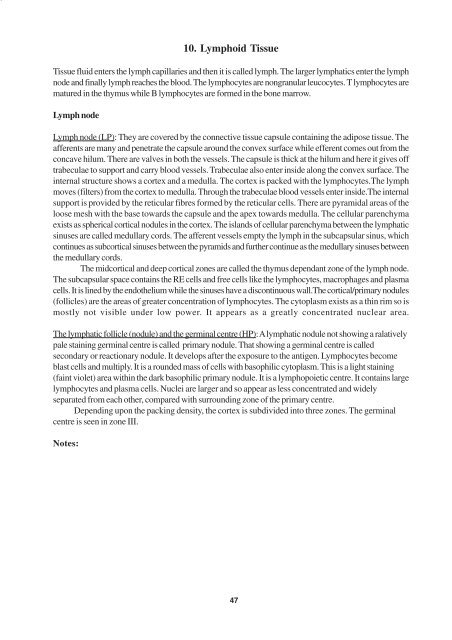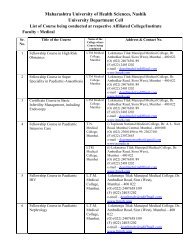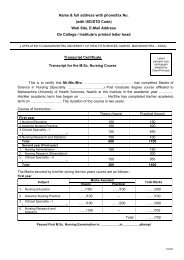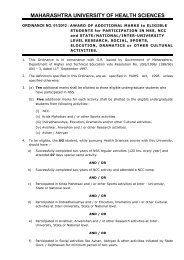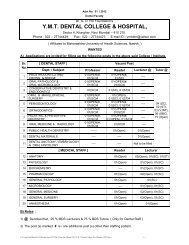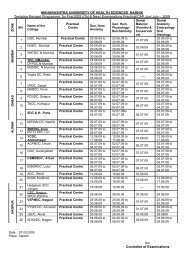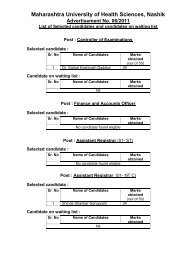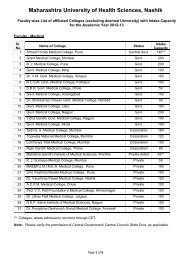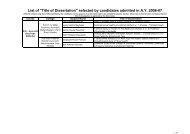Unit I
Unit I
Unit I
You also want an ePaper? Increase the reach of your titles
YUMPU automatically turns print PDFs into web optimized ePapers that Google loves.
10. Lymphoid TissueTissue fluid enters the lymph capillaries and then it is called lymph. The larger lymphatics enter the lymphnode and finally lymph reaches the blood. The lymphocytes are nongranular leucocytes. T lymphocytes arematured in the thymus while B lymphocytes are formed in the bone marrow.Lymph nodeLymph node (LP): They are covered by the connective tissue capsule containing the adipose tissue. Theafferents are many and penetrate the capsule around the convex surface while efferent comes out from theconcave hilum. There are valves in both the vessels. The capsule is thick at the hilum and here it gives offtrabeculae to support and carry blood vessels. Trabeculae also enter inside along the convex surface. Theinternal structure shows a cortex and a medulla. The cortex is packed with the lymphocytes.The lymphmoves (filters) from the cortex to medulla. Through the trabeculae blood vessels enter inside.The internalsupport is provided by the reticular fibres formed by the reticular cells. There are pyramidal areas of theloose mesh with the base towards the capsule and the apex towards medulla. The cellular parenchymaexists as spherical cortical nodules in the cortex. The islands of cellular parenchyma between the lymphaticsinuses are called medullary cords. The afferent vessels empty the lymph in the subcapsular sinus, whichcontinues as subcortical sinuses between the pyramids and further continue as the medullary sinuses betweenthe medullary cords.The midcortical and deep cortical zones are called the thymus dependant zone of the lymph node.The subcapsular space contains the RE cells and free cells like the lymphocytes, macrophages and plasmacells. It is lined by the endothelium while the sinuses have a discontinuous wall.The cortical/primary nodules(follicles) are the areas of greater concentration of lymphocytes. The cytoplasm exists as a thin rim so ismostly not visible under low power. It appears as a greatly concentrated nuclear area.The lymphatic follicle (nodule) and the germinal centre (HP): A lymphatic nodule not showing a ralativelypale staining germinal centre is called primary nodule. That showing a germinal centre is calledsecondary or reactionary nodule. It develops after the exposure to the antigen. Lymphocytes becomeblast cells and multiply. It is a rounded mass of cells with basophilic cytoplasm. This is a light staining(faint violet) area within the dark basophilic primary nodule. It is a lymphopoietic centre. It contains largelymphocytes and plasma cells. Nuclei are larger and so appear as less concentrated and widelyseparated from each other, compared with surrounding zone of the primary centre.Depending upon the packing density, the cortex is subdivided into three zones. The germinalcentre is seen in zone III.Notes:47


